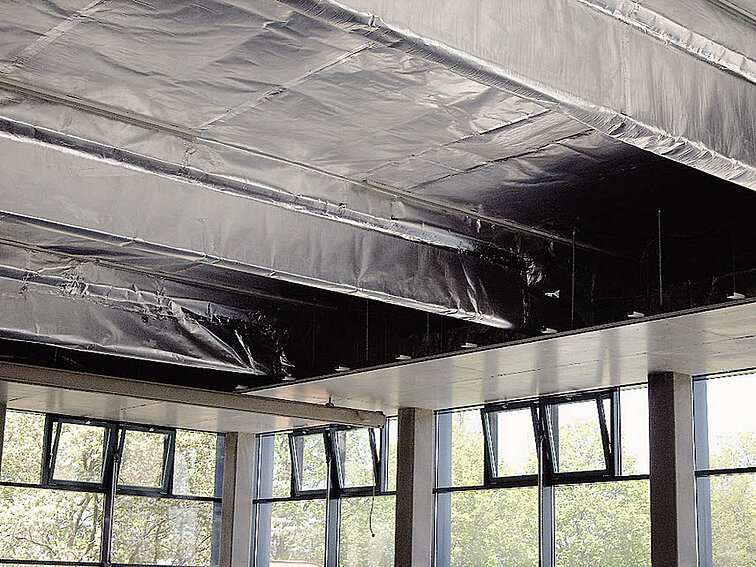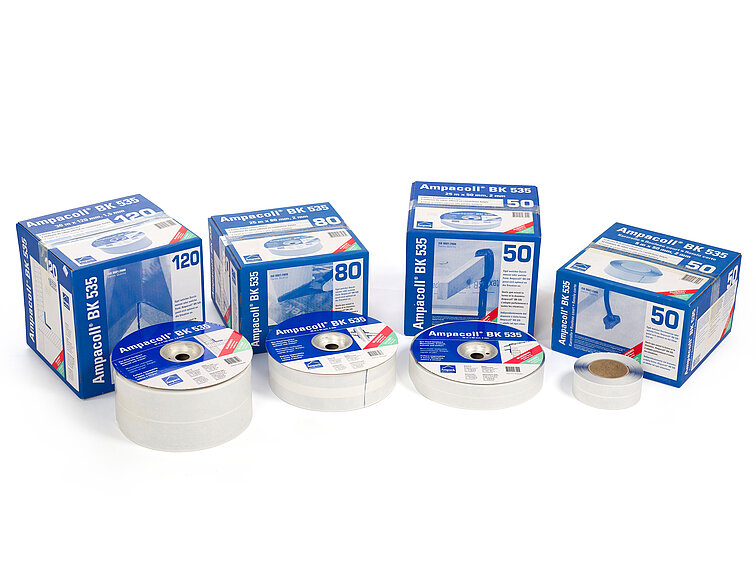Vapour seals
As well as the question of airtightness, the protection of the building against undesirable water vapour condensation is also extremely important. Previously, damage due to condensation was relatively frequent, but thanks to building techniques that increasingly use diffusive technology it is on the decline. Unfortunately, nowadays vapour-tight outer layers are increasingly being used in construction and so it can be anticipated that the damage caused by water vapour diffusion will also increase. There are still constructions that require a vapour seal.
In general: In the case of rooms with a constantly high level of air humidity, as a rule a vapour retardant with a high sD value (> 1,500 m) is required.
Examples are:
- Industrial kitchens
- Indoor swimming pools
- Laboratories
- Saunas
- Thermal insulation against the ground
The term «vapour seal» has now disappeared from the German-language norms and has been replaced by the term «vapour retardant with a high sD value». However, since it is still used very frequently in the industry it is also used here.
Beachte:
When choosing the definitive vapour retardant or vapour seal we generally go for the one that has the lowest possible diffusion resistance for our construction, since the diffusion of vapour should only be limited according to need and not as strongly as possible!







